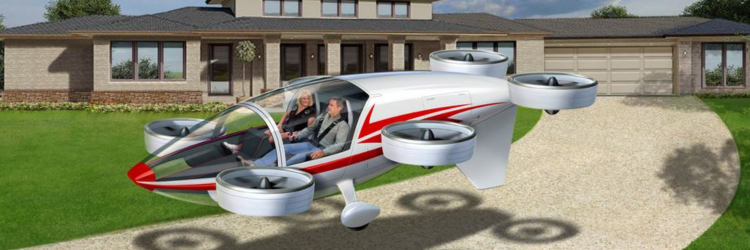
NASA’s Tech is Behind the Progress of a ‘Flying Car’
“The Jetsons” flying cars are becoming closer to reality based on NASA-proven propulsion system technology. Applied eVTOL Concepts introduced plans for the Epiphany Transporter, a vertical take-off and landing (VTOL) vehicle capable of a top speed of 160 mph (258 kph) with only 55 decibels of noise at 50 feet.
In 2002, NASA’s Ames Research Center found the ducted thrusters along the sides and rear of the Epiphany Transporter delivered sufficient thrust to potentially make the cars a viable project. The project has spanned more than two decades. The secret seems to be in the design of the spinning blades inside the duct which generate the thrust.
The “flying vehicle” accommodates two passengers and their luggage and is the size of a Tesla Model S, making it small enough to house it in a one-car garage. While it’s not a given that a car will result from the thruster technology, I’d bet on NASA tech…
